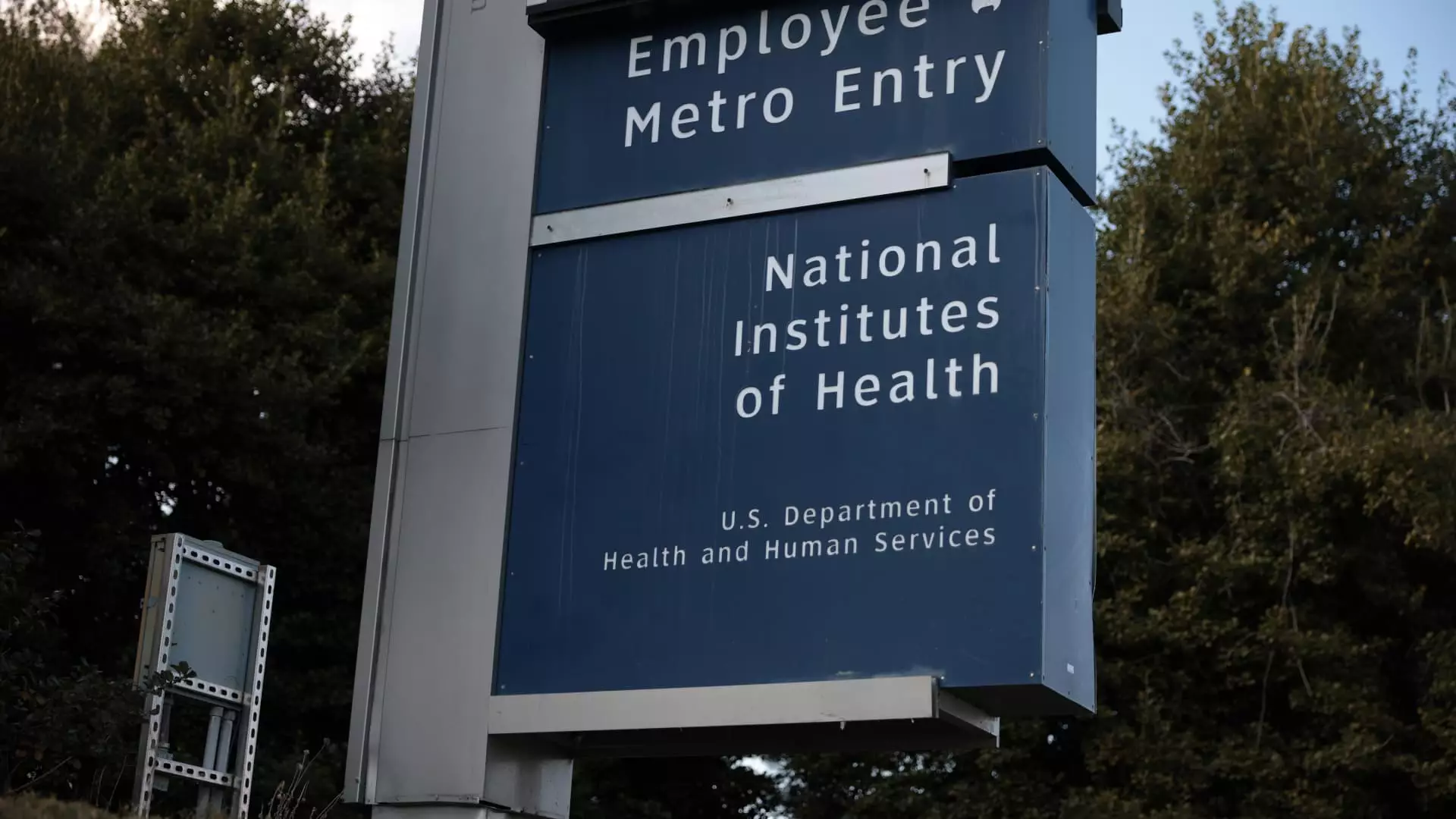In a bold move fraught with controversy, the Trump administration has proposed substantial cuts to funding from the National Institutes of Health (NIH), aiming to reduce indirect costs by capping them at 15%. This decision not only reveals a blatant disregard for scientific progression but also stands to undermine the very institutions that have been the backbone of American biomedical research for decades. The ramifications of such funding cuts could be severe, with an estimated loss exceeding $6.9 billion in research budgets across the nation. This precarious tip-toeing on the edge of a funding crisis should ignite alarm bells in the heart of every American who values innovation.
Vaccines, medical research, and conditions such as cancer or diabetes are not merely clinical terms; they represent the dreams of countless patients for whom hope hinges on ongoing scientific processes. By proposing to stave off indirect funding—the oil that keeps the wheels of research machinery running smoothly—the government appears intent on steering us toward a barren wasteland of scientific stagnation.
The Fallout in the Life Sciences Sector
Life science tools companies are already feeling the pressure as a direct consequence of the proposed NIH funding reductions. With approximately 60% of U.S. academic research funded by federal agencies, the NIH represents the single largest source of funding available. The ensuing market panic has sent shares of companies like Illumina and Bruker spiraling downwards while the broader market merely sidelines them in a time of uncertainty. Bank of America analyst Michael Ryskin stresses that capping indirect costs at a meager 15% could cripple institutions, rendering them unable to maintain the facilities crucial for complex research endeavors.
The market’s reaction does not merely highlight investor anxiety; it unveils a deeper malaise that questions the stability and future viability of the life sciences sector in America. Companies that were once heralded as harbingers of innovation now find themselves bracing for weakness as they grapple with potential funding freezes. What a tragic irony it is that amidst a backdrop of burgeoning technological advancements, our finest minds could find themselves shackled not by their ideas but by the infrastructure that supports them.
Long-Term Consequences: A National Crisis?
The repercussions of reduced NIH funding could extend far beyond the immediate financial landscape of biotech companies. As researchers grapple with dwindling resources, we risk witnessing a stalling of scientific progress that may set back the US’s position as a global leader in medical research and drug discovery. This is not merely a dilemma for scientists or policymakers; it represents a national crisis that underscores our collective inability to prioritize crucial public health funding over short-term budgetary gains.
Leading scientific voices, like researcher Tara LeGates from the University of Maryland, underscore that without proper indirect funding, institutions will struggle to maintain the infrastructure essential for research projects. This compromised stability will inevitably lead to layoffs, hiring freezes, and the shuttering of essential facilities. Research projects that may have the potential to discover groundbreaking treatments will stall as universities tighten their belts amid funding uncertainties.
The Political Underpinning: A Test of Values
This debate requires us to scrutinize our political values as a nation. Are we genuinely prepared to risk our status as a pioneer in healthcare and scientific research for the sake of short-term budgetary constraints? A curious alignment of conservative lawmakers has spoken out against these funding cuts, including Senator Susan Collins, who labeled the decision as “poorly conceived.” It raises an essential question about the compatibility of fiscal conservatism with the need for robust investment in science for the common good.
While budgetary discipline is crucial, it need not come at such a dire societal cost. As overzealous cost-cutting measures threaten our future, it is time for legislators on both sides to recognize that investments in research are, in fact, investments in public welfare and future prosperity. A truly forward-thinking approach should never cut corners on public health; it should aim to create a well-resourced system that fosters innovation, cures disease, and advances human life.
Innovation on the Brink: A Call for Action
As uncertainty looms over the future landscape of NIH-funded research, the time for decisive action is now. Stakeholders must rally to challenge these shortsighted budgetary tactics. Investing in research is investing in our collective future, a future where diseases are conquered, and lives improved. It is imperative to understand that the soul of American innovation lies in our commitment to safeguard the infrastructures that generate groundbreaking discoveries.
Bipartisan support for sustaining or even increasing NIH funding should not only be a political mantra; it must become a national priority. The decisions we make today regarding our research funding could define not just the trajectory of scientific discovery, but also the fabric of our society itself. As stewards of progress, we must ensure that the NIH remains an unfaltering beacon of hope—not just for researchers, but for every American who dreams of a healthier tomorrow.

